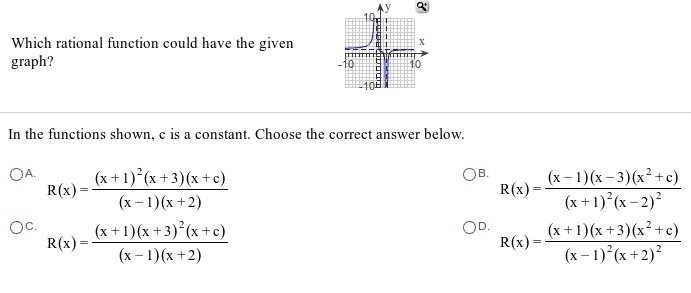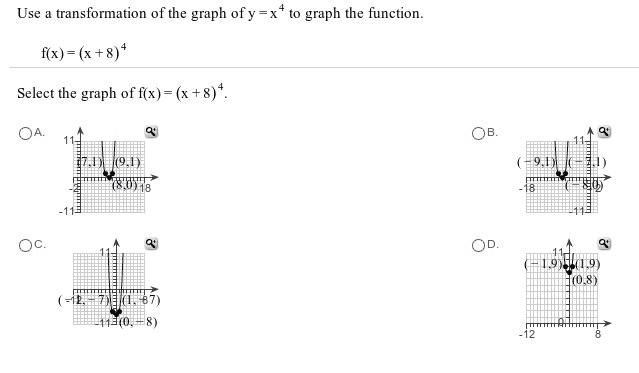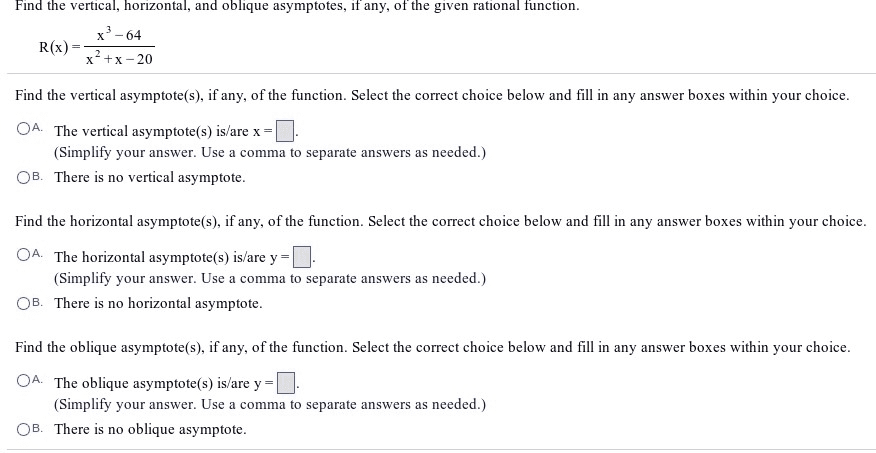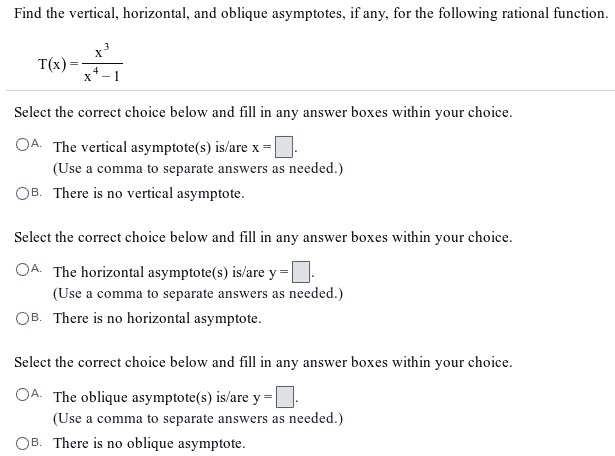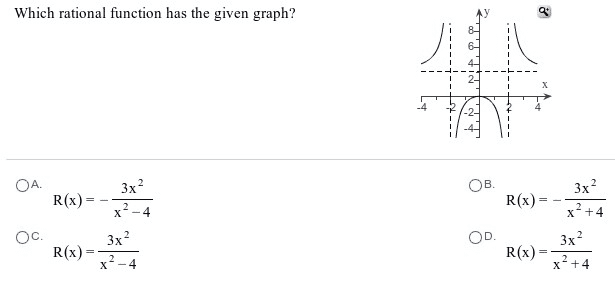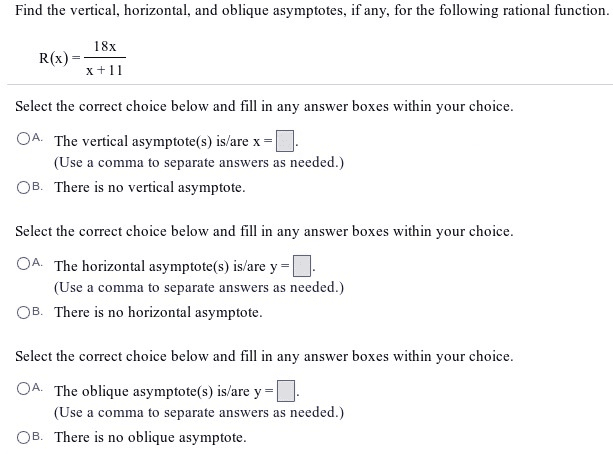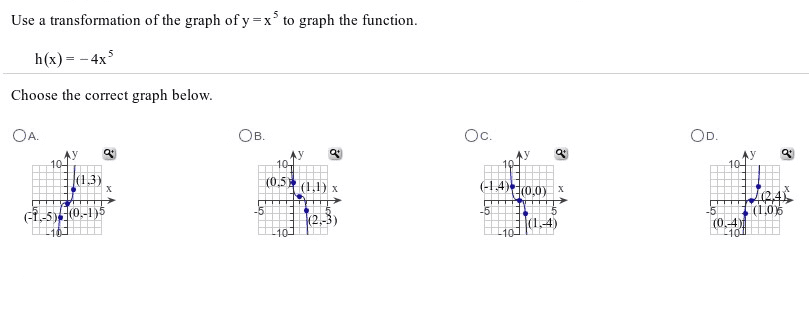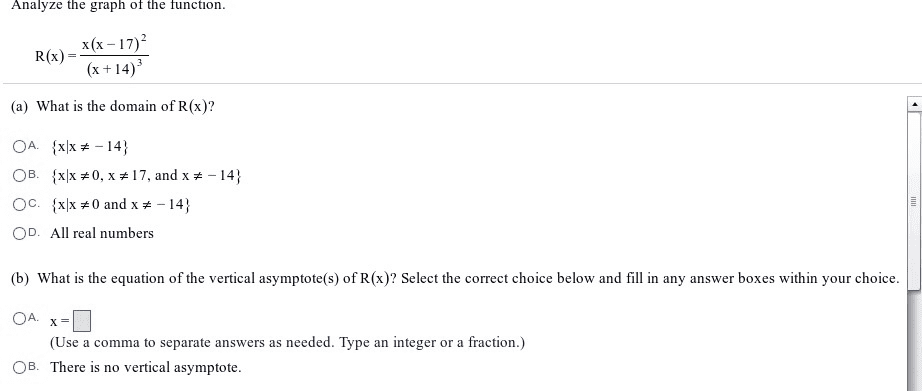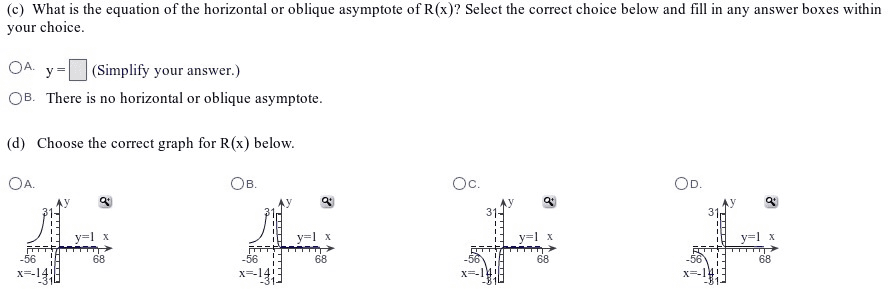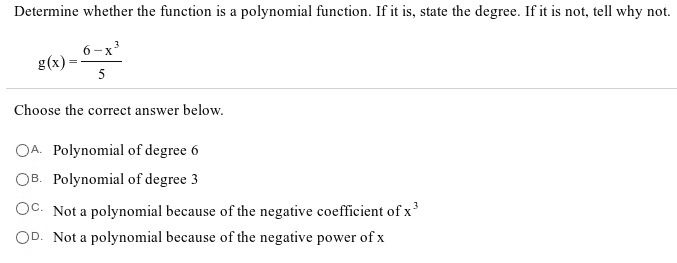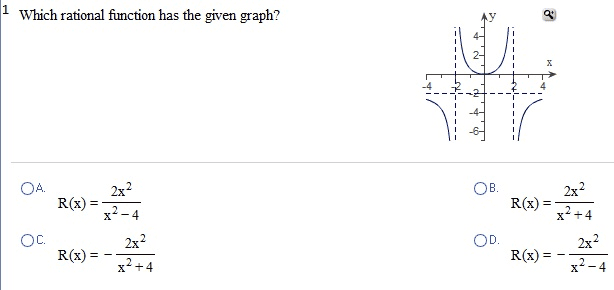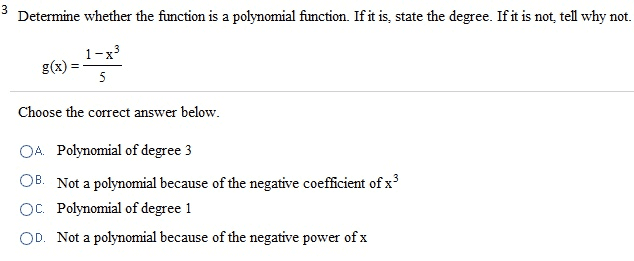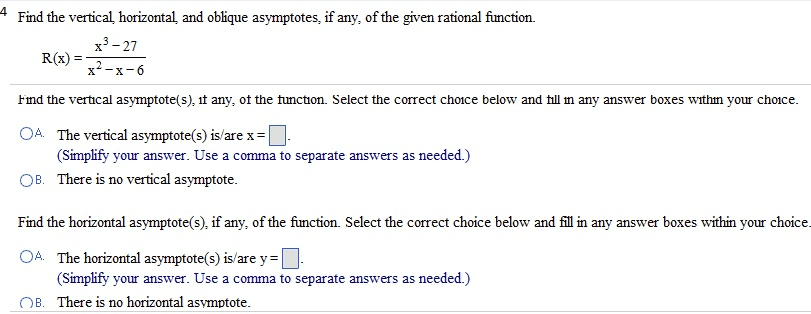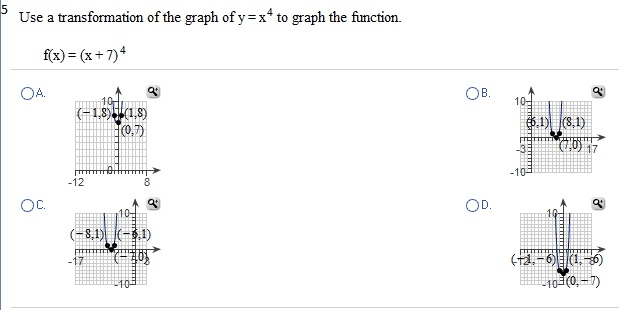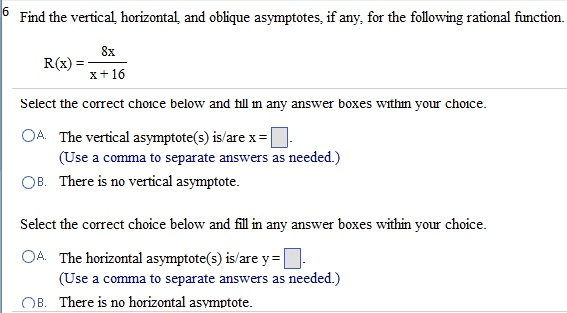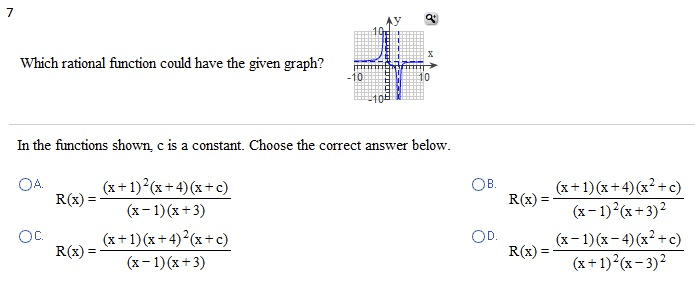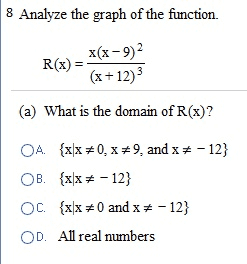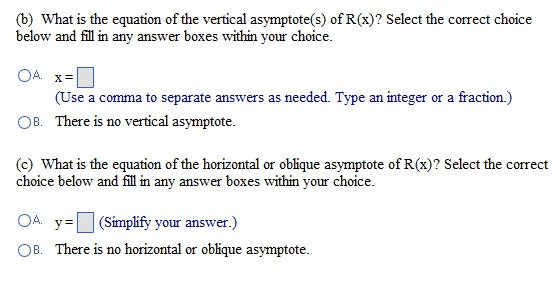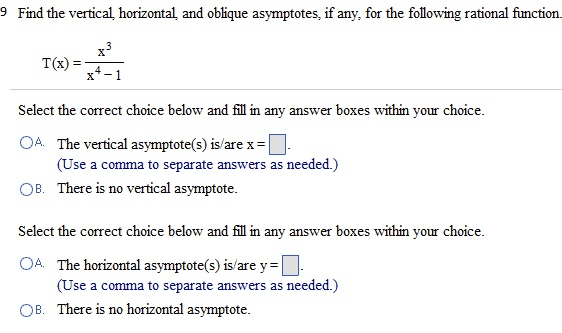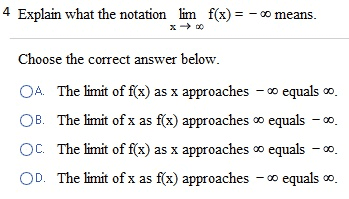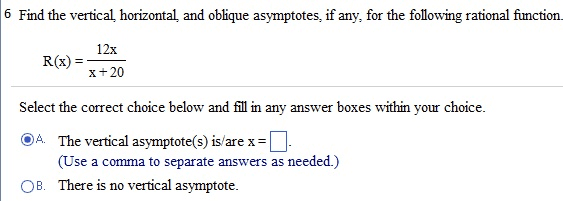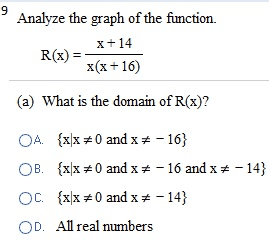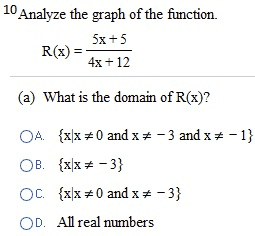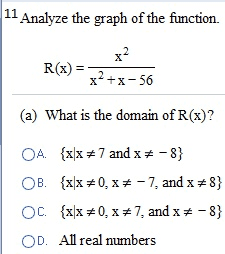QUESTION 7.
Find the domain of the function and identify any vertical and horizontal asymptotes.
f(x) = 2+x/2-x
ANSWERS:
Domain: all real numbers x except x = 2
Vertical asymptote: x = 2
Horizontal asymptote: y = -1
Domain: all real numbers x except x = 0
Vertical asymptote: x = 0
Horizontal asymptote: y = -1
Domain: all real numbers x except x = 2
Vertical asymptote: x = 0
Horizontal asympotote: y = -2
Domain: all real numbers x except x = -2
Vertical asympotote: x = 0
QUESTION 8.
Select the correct graph of the function. Choose from among the graphs listed below: 1st, 2nd, 3rd, or 4th.
f(x)=6/x+3
QUESTION 9.
The cost C (in millions of dollars) of removing p% of the industrial and municipal pollutants discharged into a river is given by
C=245p/100-p,0 ⤠p < 100
According to this model, it is possible to remove 100% of the pollutants.
ANSWERS:
True
False
QUESTION 10.
Based on your answer to the previous problem, explain why you chose your answer (whether it is possible or not to remove 100% of the pollutants).
QUESTION 11.
In the following formula, S(x) is the minimum number of hours of studying required to attain a class score of x. How many hours of study are needed to score 56? Round your answer to the nearest whole number.
S(x)= 50x/100-x
QUESTION 12.
The concentration C (in mg/dl), of a certain antibiotic in a patient's bloodstream is given by C(t)=50 t /(t^2 + 25) where t is the time (in hours) after taking the antibiotic. What is the concentration 5 hours after taking the antibiotic?
QUESTION 13.
In order to join a gym, you pay a $200 annual fee, then $10 for each exercise class you attend. Indicate which equation below would allow you to determine the average cost per class if you go to x amount of classes: 1st, 2nd, 3rd, or 4th.
QUESTION 14.
Which of the following can a graph NEVER cross:
ANSWERS:
Vertical asymptote
Horizontal asymptote
Slant asymptote
All of the above
QUESTION 15.
Select the graph of the rational function. Choose from among the graphs below: 1st, 2nd, 3rd, or 4th.
g(x)=1/2-x
QUESTION 16.
One pipe can fill a pool in 1.5 hours. A second pipe can fill up the pool in 2 hours. Which of the equations below would determine how long it would take to fill the pool when both pipes are used? Select the correct equation:1st, 2nd, 3rd, or 4th.
QUESTION 17.
Using the equation you wrote in the last problem, how long would it take to fill the pool if both pipes are open at the same time? Write your answer in fraction form.
QUESTION 7.
Find the domain of the function and identify any vertical and horizontal asymptotes.
f(x) = 2+x/2-x
ANSWERS:
Domain: all real numbers x except x = 2
Vertical asymptote: x = 2
Horizontal asymptote: y = -1
Domain: all real numbers x except x = 0
Vertical asymptote: x = 0
Horizontal asymptote: y = -1
Domain: all real numbers x except x = 2
Vertical asymptote: x = 0
Horizontal asympotote: y = -2
Domain: all real numbers x except x = -2
Vertical asympotote: x = 0
QUESTION 8.
Select the correct graph of the function. Choose from among the graphs listed below: 1st, 2nd, 3rd, or 4th.
f(x)=6/x+3
QUESTION 9.
The cost C (in millions of dollars) of removing p% of the industrial and municipal pollutants discharged into a river is given by
C=245p/100-p,0 ⤠p < 100
According to this model, it is possible to remove 100% of the pollutants.
ANSWERS:
True
False
QUESTION 10.
Based on your answer to the previous problem, explain why you chose your answer (whether it is possible or not to remove 100% of the pollutants).
QUESTION 11.
In the following formula, S(x) is the minimum number of hours of studying required to attain a class score of x. How many hours of study are needed to score 56? Round your answer to the nearest whole number.
S(x)= 50x/100-x
QUESTION 12.
The concentration C (in mg/dl), of a certain antibiotic in a patient's bloodstream is given by C(t)=50 t /(t^2 + 25) where t is the time (in hours) after taking the antibiotic. What is the concentration 5 hours after taking the antibiotic?
QUESTION 13.
In order to join a gym, you pay a $200 annual fee, then $10 for each exercise class you attend. Indicate which equation below would allow you to determine the average cost per class if you go to x amount of classes: 1st, 2nd, 3rd, or 4th.
QUESTION 14.
Which of the following can a graph NEVER cross:
ANSWERS:
Vertical asymptote
Horizontal asymptote
Slant asymptote
All of the above
QUESTION 15.
Select the graph of the rational function. Choose from among the graphs below: 1st, 2nd, 3rd, or 4th.
g(x)=1/2-x
QUESTION 16.
One pipe can fill a pool in 1.5 hours. A second pipe can fill up the pool in 2 hours. Which of the equations below would determine how long it would take to fill the pool when both pipes are used? Select the correct equation:1st, 2nd, 3rd, or 4th.
QUESTION 17.
Using the equation you wrote in the last problem, how long would it take to fill the pool if both pipes are open at the same time? Write your answer in fraction form.
For unlimited access to Homework Help, a Homework+ subscription is required.
